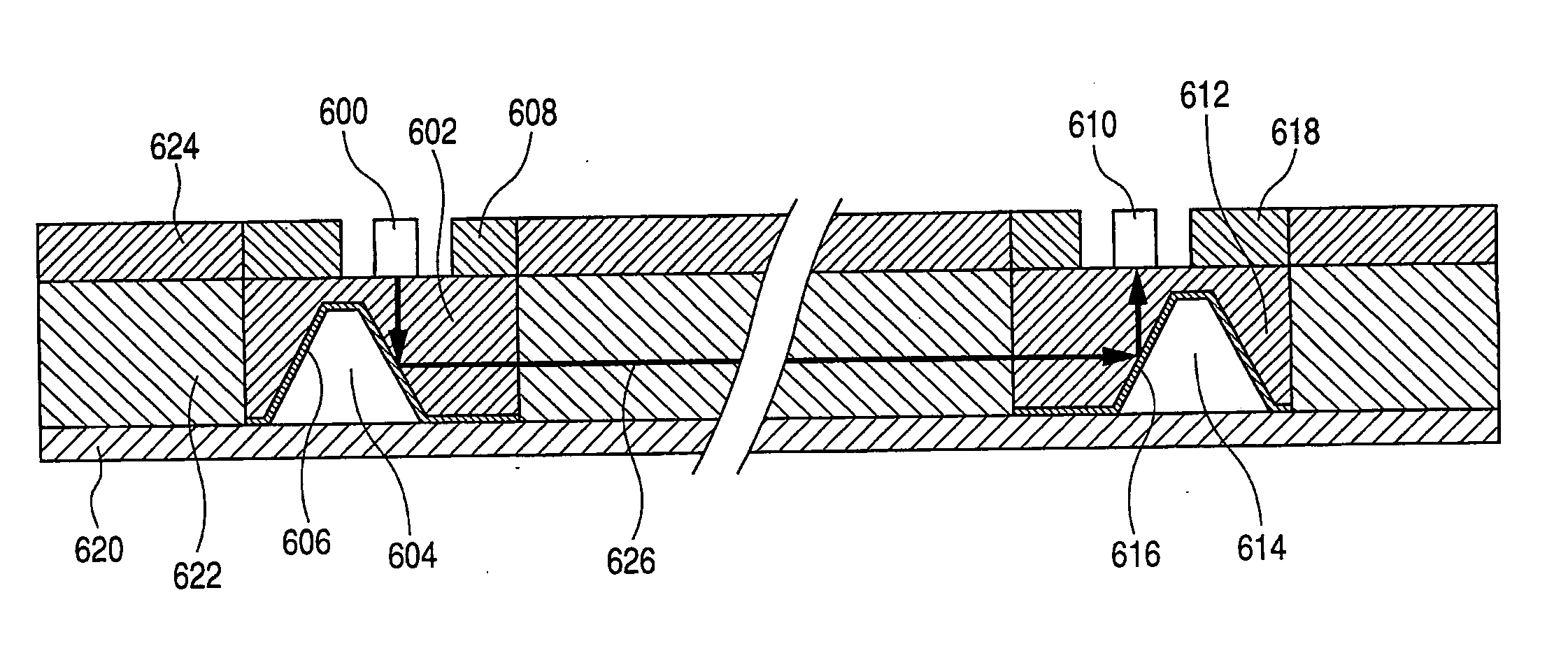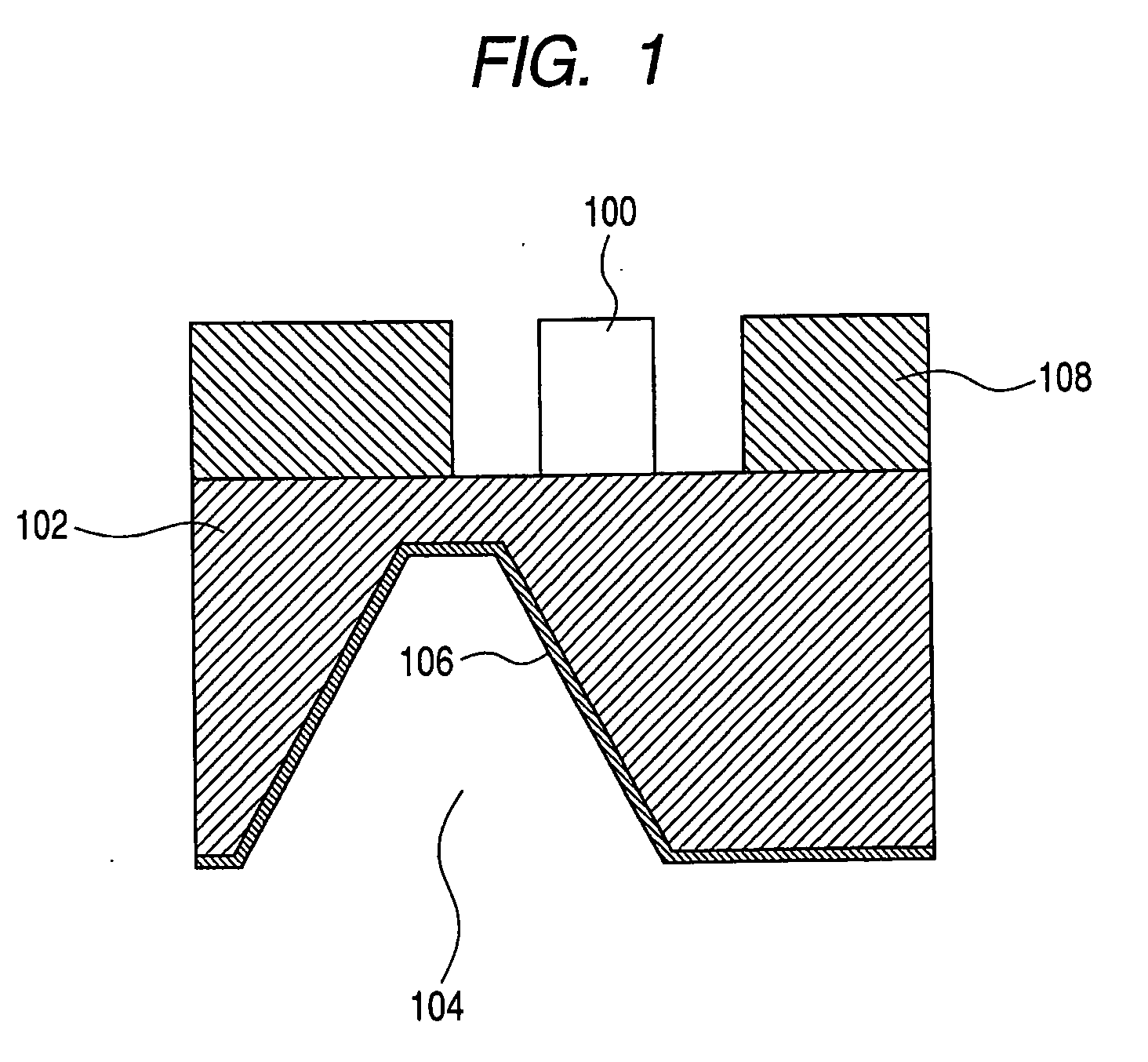Optical element device and two-dimensional optical waveguide device and optoelectronic circuit board using the same
a technology of optical waveguide and optical element, which is applied in the direction of optical elements, optical waveguide light guides, instruments, etc., can solve the problems of difficult mounting of light emitting elements, limited light emitting elements and light receiving elements, and signal delays and emis, so as to achieve efficient optical couplement, facilitate mounting, and facilitate the effect of rearranging the optical signal transmitting region
- Summary
- Abstract
- Description
- Claims
- Application Information
AI Technical Summary
Benefits of technology
Problems solved by technology
Method used
Image
Examples
embodiment 1
[0038]FIG. 1 is a schematic cross sectional view of the first embodiment of the present invention, which is a light emitting element device comprising a surface emission type light emitting element. In FIG. 1, there are shown a surface emission type light emitting element 100 (VCSEL: vertical cavity surface emitting laser), which is a functional section of the light emitting element device, a growth substrate 102, an optical path transforming structure 104, a metal film (mirror) 106 of the optical path transforming structure 104 and a semiconductor layer 108. The surface emission type light emitting element 100, which is a functional section of the light emitting element device, and the metal film 106 of the optical path transforming structure 104 are arranged to show such a positional relationship that light emitted from the surface emission type light emitting element 100 is coupled to the optical path transforming structure 104 so as to turn the optical path by 90D.
[0039] Now, a...
embodiment 2
[0050]FIG. 6 is a schematic cross sectional view of the second embodiment of the present invention, which is a two-dimensional optical waveguide device comprising an optical element device including a pair of optical path transforming structures as well a surface emission type light emitting element and a light receiving element integrally formed with it. In FIG. 6, there are shown a surface emission type light emitting element (VCSEL) 600, a pair of growth substrates 602 and 612, a pair of optical path transforming structures 604 and 614, metal films (mirrors) 606 and 616, a pair of semiconductor layers 608 and 618, a light receiving element 610, a first clad layer 620, a core layer 622, a second clad layer 624 and a laser beam 626. The two-dimensional optical waveguide is formed by using a combination of different materials showing respective refractive indexes that are different from each other, that is, by the core layer 622 and the first and second clad layers 620 and 624 that ...
embodiment 3
[0057] The third embodiment is a two-dimensional optical waveguide device in which a surface emission type light emitting element that is integral with an optical path transforming structure and a light receiving element that is also integral with an optical path transforming structure are formed on a same growth substrate while light emitted from the surface emission type light emitting element is propagated through the growth substrate that operates as optical waveguide layer and propagated light is coupled to the light receiving element to transmit an optical signal. FIG. 8 is a schematic cross sectional view of this embodiment of two-dimensional optical waveguide device. In FIG. 8, there are shown a surface emission type light emitting element 800, a growth substrate 802, a pair of optical path transforming structures 804 and 812, a pair of metal films (mirrors) 806 and 814, a semiconductor layer 808 and a light receiving element 810.
[0058] The surface emission type light emitt...
PUM
 Login to View More
Login to View More Abstract
Description
Claims
Application Information
 Login to View More
Login to View More - R&D
- Intellectual Property
- Life Sciences
- Materials
- Tech Scout
- Unparalleled Data Quality
- Higher Quality Content
- 60% Fewer Hallucinations
Browse by: Latest US Patents, China's latest patents, Technical Efficacy Thesaurus, Application Domain, Technology Topic, Popular Technical Reports.
© 2025 PatSnap. All rights reserved.Legal|Privacy policy|Modern Slavery Act Transparency Statement|Sitemap|About US| Contact US: help@patsnap.com



